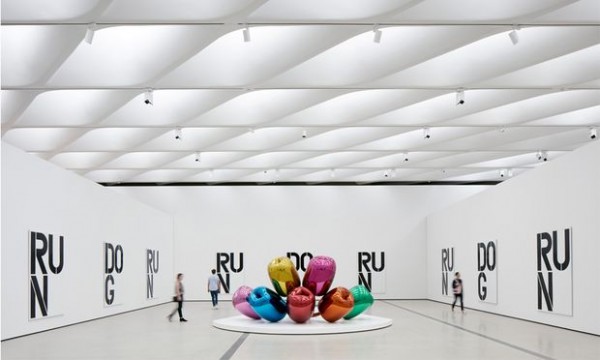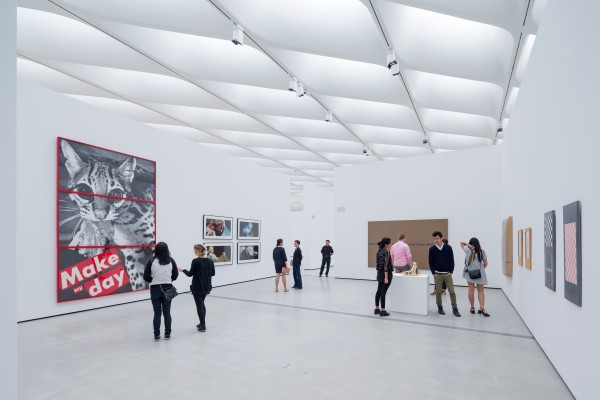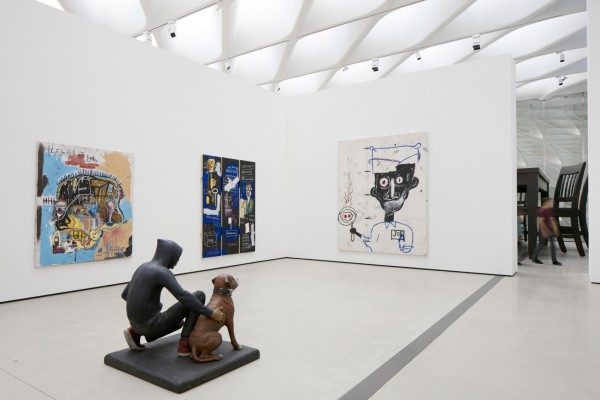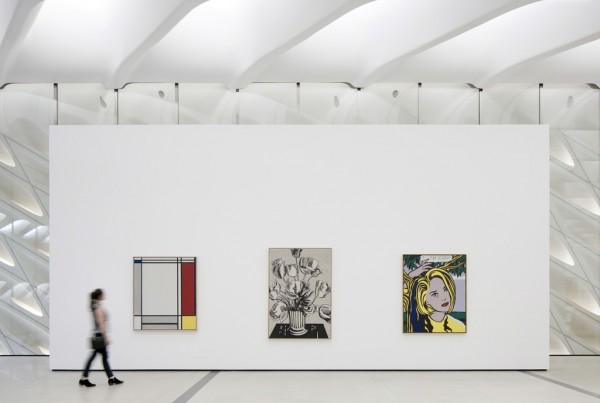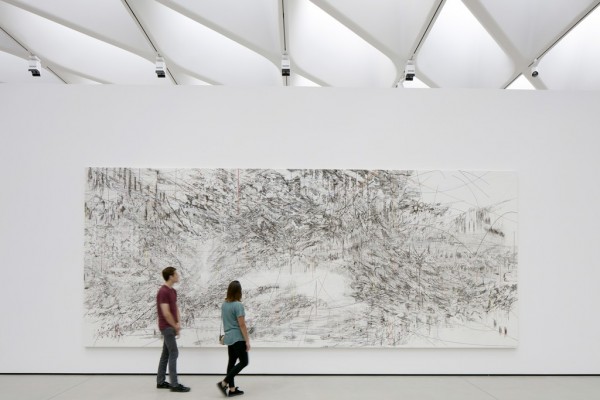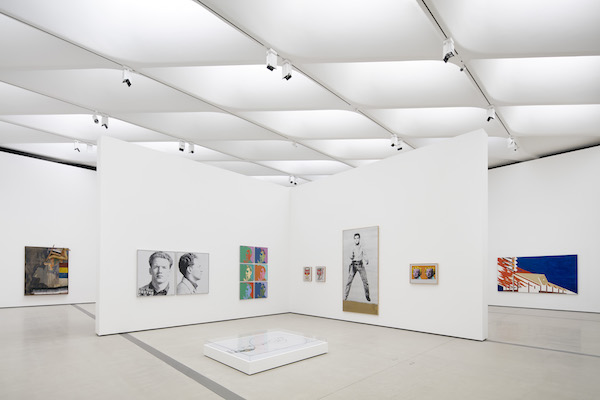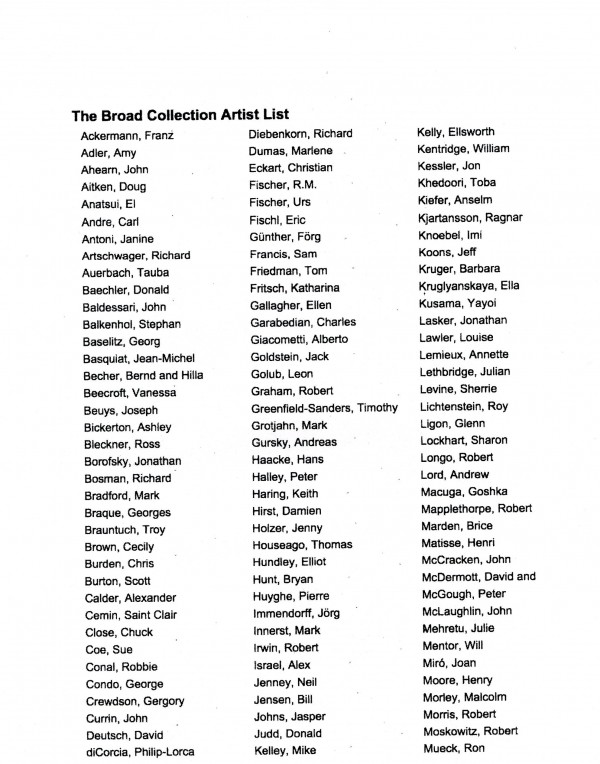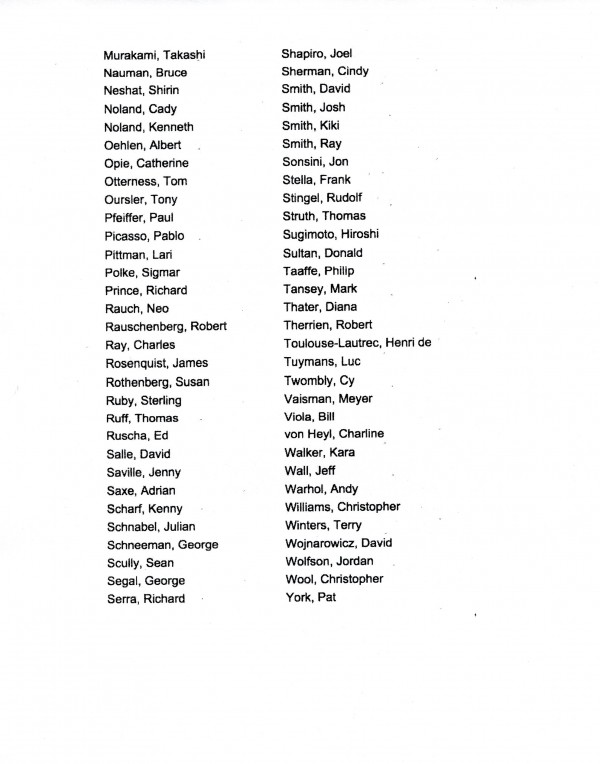OPENED TO THE PUBLIC ON SUNDAY, SEPTEMBER 20, 2015
At the festive opening ceremonies with dignitaries galore, Joanne Heyler, Founding Director and Chief Curator, announced that they had received 85,000 requests for free admission. It confirmed the fact that The Broad had tapped both an audience and an appetite for the focus of its collection: Post War and Contemporary Art. Museums with appellations of “modern” and “contemporary” proliferate around the globe: Abu Dhai, Antwerp, Berlin, Bilbao, Bogota, Boston, Brisbane, Chicago, Cincinnati, Dublin, Helsinki, Humlebaek (Denmark), Istanbul, London, Madrid, Mexico City, Milan, Minneapolis, Montreal, Moscow, Naples, New Delhi, New York, Nice, Paris, Rio de Janeiro, San Francisco, Tel Aviv, Toronto, and Venice among others.
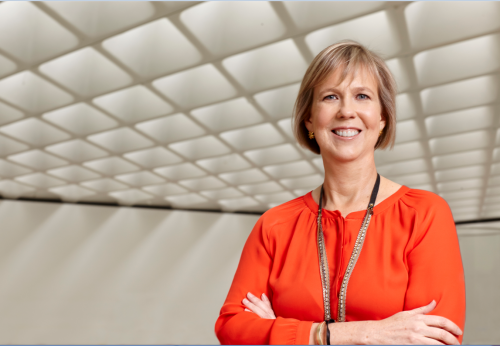
“The Broad,” not the “Broad Museum” joins a club of private art collections which have been transformed into public art museums. The closest parallel, the Solomon R. Guggenheim Museum based in New York, with numerous branches around the world, began as a private collection created under the guidance of Hilla von Rebay. She had a passion for “non-objective art” and possessed the “proverbial eye.” In the 1940s and 1950s she managed to find and purchase outstanding examples of modern art created by the masters of the first half of the twentieth century. Appreciated as significant works of art by the cognoscenti at that time, they had yet to reach a wider audience, gain recognition and appreciate in monetary value. Today, many of these experimental early 20th century works works in the Guggenheim collection are considered masterpieces and are seen regularly by tens of thousands, if not hundreds of thousands of people in various Guggenheim Museum venues.
In the 1970s, Eli and Edye Broad began their exploratory trajectory in the contemporary art world. It began in Los Angeles and shifted in 1980s to Downtown New York. In both places, they associated with artists and dealers.
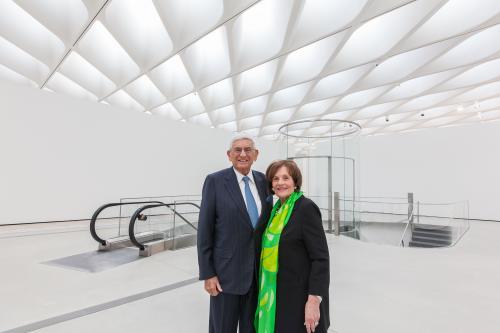
They managed to cultivate both established artists of that generation as well as experimental, “fringe,” artists, many of whom became numerous in their collection. Eli was a prominent player in the early years of the establishment of Los Angeles Museum of Contemporary Art. All of this is throughly documented in the excellent catalogue of the collection.
The Broads are following in the footsteps of an earlier generation of American collectors of the experimental art of their times. Not so much following Solomon R. Guggenheim who had a professional consultant, but more so typified by Louise and Walter Arensberg and Katherine S. Drier, both of whom exhibited a passion for collecting what, at the beginning of the 20th century was called “avant garde” art, and for establishing rapport with the artists whom they collected as well as their dealers. The Arensbergs were early collectors of Marcel Duchamp and other equally experimental artists. Among other works which have since become treasured masterpieces, they owned a version of Duchamp’ s Nude Descending a Staircase. They lived in Hollywood in the 1940s and were active in the local art scene, but failed to find a home for their collection in Los Angeles. It is now a jewel in the crown of The Philadelphia Museum of Art.
With Marcel Duchamp and Man Ray, Katherine S. Drier, an artist in her own right, founded Société Anonyme to promote the work of avant-garde artists. This group saw itself as distinct from artists like Braque, Matisse, Picasso and the people who followed in their footsteps whom the avant-garde artists would have described as more conventional than themselves.
Katherine S. Drier’s personal collection of classic avant garde 20th century art was dispersed; however, there is a Société Anonyme archive on deposit at the Yale University Library. She loved to tell stories about her encounters with the artists in her collection. This was one of her favorites. She owned one of Marcel Duchamp’s glass sculptures. When it was returned from loan to an exhibition, the glass was cracked. In dismay, she informed Duchamp. He said: “That improves it!”
The Arensbergs’ and Katherine Drier’s collections would appear to be minuscule in comparison to The Broad’s 2,000-piece collection of more than 200 artists. The opening exhibition of 250 works by 60 artists offers a selective tip of the iceberg.
Subsequent exhibitions will be drawn from the collection housed on the building’s second floor directly below the third floor exhibition gallery. While focusing their collecting on art scenes in New York and Europe, the artists of Los Angeles have been and continue to be a focus of their collecting. Edythe and Eli Broad have been consistently committed to the work of emerging artists making the collection an ongoing record of the most recent work to have been created over past decades.
Clearly, The Broad envisions a didactic function. The massive illustrated catalogue offers an observed and helpful categorization of the collection: Challenging History, Society and Selfhood, Perceptual Games, Comedy and Tragedy, and Making and Breaking Patterns. The works on display are amplified with excellent explanatory panels. Although it will certainly happen, the expectation is that this was not planned as a “Likes” and “Thumbs Up” experience.
It is also appropriate to ask what The Broad offers to the cultural life of Downtown Los Angeles? With the expansion of the freeway system, Downtown Los Angeles became a victim of the social, physical and geographical expansion of the City of Los Angeles. For many years, it was a desolate neighborhood. Recently, this part of the city has been experiencing a social and physical rebirth. The Grand Avenue Plan envisioned a concentration of cultural complexes in proximity to each other on Grand Avenue. The Ahmanson Theatre, Disney Hall, and MOCA were part of the original plan. The addition of The Broad complements the other institutions by adding strength to that vision.

